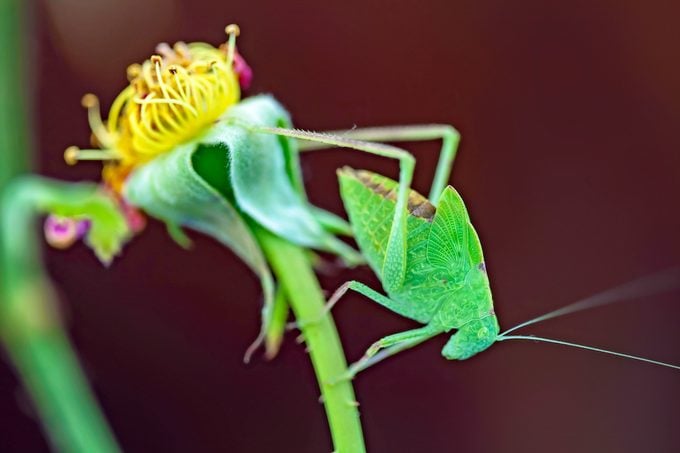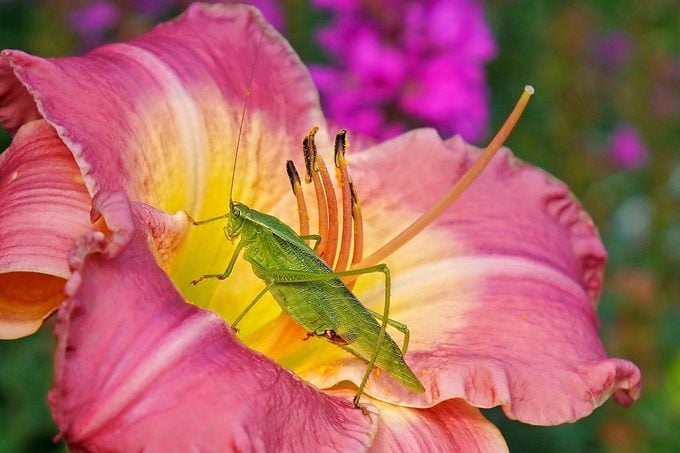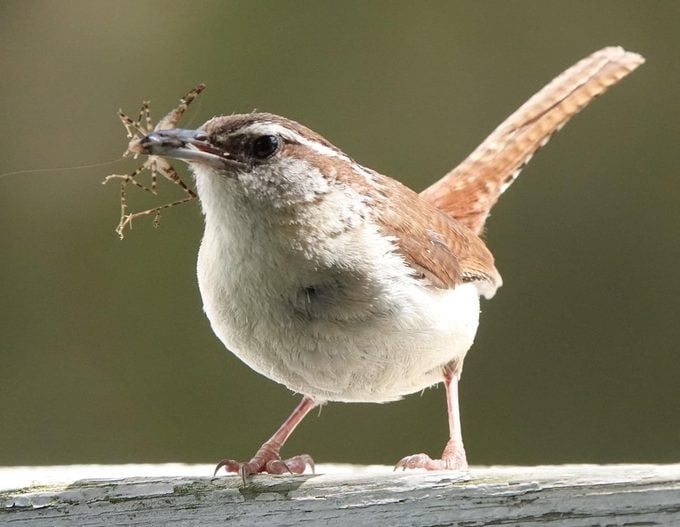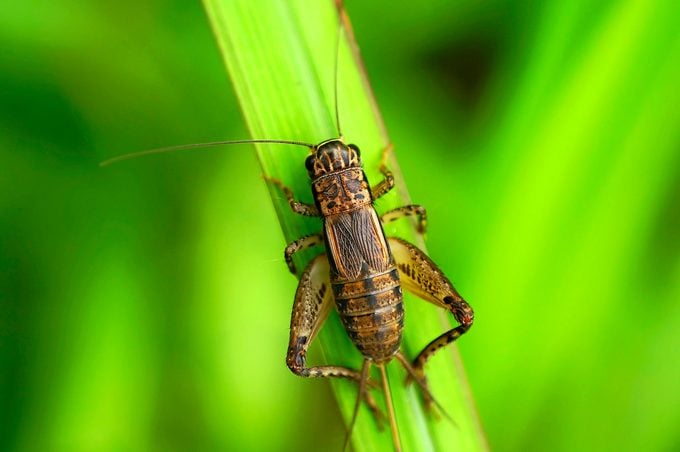Nighttime Serenades: Katydids and Crickets in Your Garden
Listen for Cricket and Katydid Sounds at Night

You can’t see the singers in the shadows, but you sure can hear them! Their music fills the night air— pulsating, chirping, clicking and buzzing from every direction. The concert starts soon after dusk and keeps going strong until around midnight, and it can last well into November in some areas. Who are these secret singers? Cricket insects and katydids.
Depending on where you call home, you might hear sounds of hundreds of different species, including a couple with amusing and grand monikers. You might hear the aptly named melodious ground cricket, splendid shield-backed katydid or robust conehead.
These amazing pictures will change how you see bugs .
Attract Night Singing Insects

Night-singing insects fill all sorts of ecological niches, making homes under logs and in fields, marshes, deserts, shrubs, trees or grasses—and our own yards, too. To boost the number and variety of your musicians, naturalist and educator Carl Strang, who holds a doctorate in wildlife ecology, recommends planting your garden in layers: “The same as you would for birds, with a nice structure of trees, bushes and herbaceous plants, including natives.”
Discover beneficial insects you want to see in your garden.
Why Do Katydids and Crickets Sing?
Only the male katydids and crickets sing. They do it for the same main reasons birds do : to attract mates and defend their territories. But, unlike birds, they do it with their bodies, not their voices. To entice females and warn off competitors, they scrape one wing against another in a mechanical act called stridulation. The females hear them through earlike structures on their legs, then go to where the boys are.
These bugs are cold-blooded, so they fiddle even faster as the temperature rises and slow down when it’s cooler. For a fun little game, try using a snowy tree cricket as a thermometer. Count the number of chirps in 13 seconds, add 40, and presto—that’s the approximate temp in Fahrenheit!
Meet the fierce and fascinating praying mantis .
When Do Crickets and Katydids Come Out?
On steamy summer nights, our backyards come alive with musical insects. Where do they come from? Why, they’re right there every day, staying silent in treetops and bushes, or on the ground. They’re good-sized, but easy to overlook in their green or brown camouflage. At night they’re safe from birds, so they strike up the band.
What Do Crickets and Katydids Eat?
Nearly all nighttime singers are vegetarians, nibbling on foliage, fungi or sometimes flowers. Some musical insects visit our flowers for food—petals, pollen, smaller insects—while others nibble on leaves or nab any lesser critter in their path.
They don’t cause problems or threaten agriculture; they just go about their lives right under our noses, and we rarely even notice them in the daytime. “You may see them if you’re moving around, working on your garden,” Carl says. “Watch for motion, because they’ll be moving out of your way!”
It’s tricky to find these musicians, because they go quiet when we approach. Check your flowers at night: Asters, goldenrod, Autumn Joy sedum and autumn-flowering clematis are prime hunting grounds. Or try sneaking up on individuals elsewhere. Remain still when the insect goes quiet, and advance when it starts up again.
Discover the garden bee species you should know.
Cricket and Katydid Predators

Birds have no problem spotting night singers during the day and scour the foliage to ferret them out, even though the insects are silent and camouflaged. Parasitic wasps search for them, too, to use as hosts for their eggs and to develop larvae. Mice and other small animals also may snatch up the musical katydid and cricket insects.
Do birds eat bees, mosquitoes and butterflies?
How to Identify Cricket and Katydid Sounds

Identifying night singers can be a challenge, so start by simply enjoying the symphony, suggests wildlife ecologist and educator Carl Strang. Learning who’s singing is “comparable to learning birdsong,” Carl says. You’ll need to match their sounds to recordings.
Go to the Singing Insects of North America website, and click “ Sample songs of crickets and katydids ” for examples of their tunes. For a quick and easy foundation, start with the big three, which are widespread, abundant and loud.
- Field cricket (both spring and fall species, which overlap): High-pitched throbbing chirps
- Snowy tree cricket: A deeper rhythmic chirping, often misidentified as the song of field crickets
- Common true katydid: A grating three-syllable rasp, declaring ‘katy did!’
About the Expert
Dr. Carl Strang holds a doctorate in wildlife ecology. He is a naturalist and educator who works to document and study the sounds of singing insects. He is the author of author of Singing Insects of the Chicago Region: A Guide to Crickets, Katydids, Grasshoppers and Cicadas with Audible Displays.
Post a Comment for "Nighttime Serenades: Katydids and Crickets in Your Garden"
Post a Comment